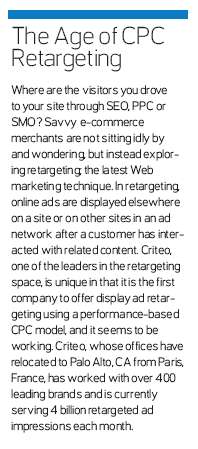Post-Click Testing Essentials

A Starter Guide for Landing Page Campaigns
Many Web professionals invest the majority of their time and budgets acquiring visitors through paid search advertising, search engine optimization (SEO) and social media marketing. However, "post-click" has captured the attention of many, and for good reason: It is the least expensive way to improve response rates, generate conversions and meet key performance indicators like time-on-site and page views.
In June, 2009, Website Magazine's "Five PPC Landing Page Design Trends" generated a huge response from readers. The trends we identified included providing limited paths for users, displaying images and trust elements prominently and featuring strong calls to action. These approaches have become best practices but stop short of revealing essential principles to successful testing after the click.
The variable that changed most frequently on the sites we reviewed in 2009 was the conversion tactic the website employed - the approach used for converting a browser into a buyer. Some enterprises put up a simple e-mail-only registration wall, while others used more elaborate content-teasing techniques and indepth registration processes. What quickly became clear were the many ways to develop a post-click campaign. That tends to lead to confusion, ultimately paralyzing any website's potential for improvement.
Getting started with landing page optimization campaigns or postclick marketing requires a close inspection of business objectives and a critical review of how to go about achieving them. Start with this basic guide and you will have a formal plan for generating results today and in future campaigns.
Create a Sandbox or Find a Vendor
When it comes to landing pages there can be many moving parts. Setting up a central repository for your landing pages keeps everything organized. Start by requesting approval for a dedicated website or some reserved disk space from your IT department. As a webmaster, setting up a separate subdomain for the exclusive purpose of testing post-click tweaks will prove useful. Should you opt for a database-driven software-as-a-service (SaaS), then determining the depth of service offerings desired (cost, features, support, etc.) is essential.
 Commit to Start Slow With A/B testing
Commit to Start Slow With A/B testing
A/B or bucket testing is a method wherein a control sample or baseline is compared to a variety of single-variable test samples. In other words, test the performance of a landing page already in use against a landing page with one subtle difference - a new image, an add-to-cart button, calls to action, the positioning of sidebars, or even something as simple as background color. The advantage of A/B testing is in identifying the elements that produce the greatest improvements. A/B testing also allows you to learn from mistakes and to position landing pages for more rigorous multivariate testing.
Develop a Process and Stick With It
You need a process - one where hypotheses are presented, elements are selected for testing, creative assets are developed, and finished pages are marketed, tested and analyzed. Breaking down a post-click marketing effort formalizes your steps and helps ensure thoroughness. Consider using a project management solution like Basecamp or others.
Start Testing, and Keep Testing
The most effective landing pages reinforce conversion intent; the answer to "What am I supposed to do here?" It is imperative to consider the mindset of the visitor and offer enough information to persuade them to convert. With an infinite makeup of visitor personas, however, and an endless list of elements that could be tested on landing pages you might not know what to test first. Remember that "first" will not be "last." Get started, monitor your progress and continue testing.
Keep these four principles in mind when starting a landing page campaign and remove the barriers to improvements post-click.











